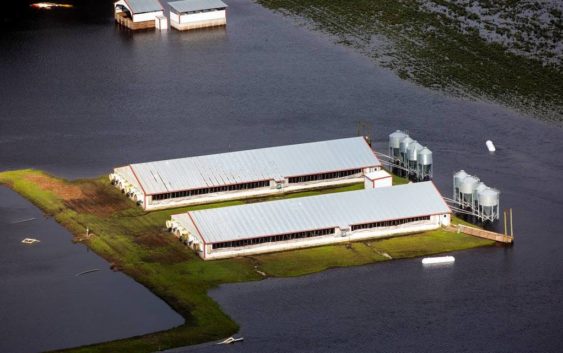- Couple accused of creating videos of young girls using hidden cameras at The Woodlands Mall, Hurricane Harbor
- Couple accused of creating videos with hidden cameras at The Woodlands Mall, Hurricane Harbor
- The Texanist: Texas Gets More Tornadoes Than Any Other State, but Don’t Freak Out
- U.S. Supreme Court says Texans can sue state for flood damage
- This is how many hurricanes NC State researchers predict this year
More NC hog lagoons are breached and overflowing as Florence flood waters rise

State authorities said Tuesday the number of hog lagoons in the state that are overflowing and spilling is double the amount counted Monday afternoon as new information comes in from the field.
The N.C. Department of Environmental Quality reports that four of the open air pits that store hog waste have structural damage, up from two known pits whose retaining walls have breached.
The agency said 13 are overflowing from heavy rainfall and 55 are close to the brim and could overflow if water levels continue rising.
The agency has not inspected any of the 3,300 open air waste lagoons in North Carolina and is relying on self-reporting by farmers, said spokeswoman Megan Thorpe. Three regional agency offices are closed after Hurricane Florence and some employees had to be evacuated due to rising water levels.
What’s more, it’s assumed that some farmers have not yet seen the state of their hog operations because they lack access to their properties.
Hog lagoons pose an environmental contamination risk because swine feces and urine contain pathogens. Hog lagoons are low-level technology to process the waste by allowing microorganisms to break down the matter into nutrients that can be used as fertilizer. North Carolina is one of the nation’s biggest livestock producers, ranking second in hog production; the state has more than 2,000 permitted swine farms and 9.3 million pigs.
Hog farms typically manage their waste by storing it in lined, earthen pits, and spraying the nutrient-rich fluid on crops as plant food. During major storms, uncovered lagoons can fill up with rain and overflow.
After Hurricane Matthew in 2016, one waste lagoon failed, and 14 others were inundated.